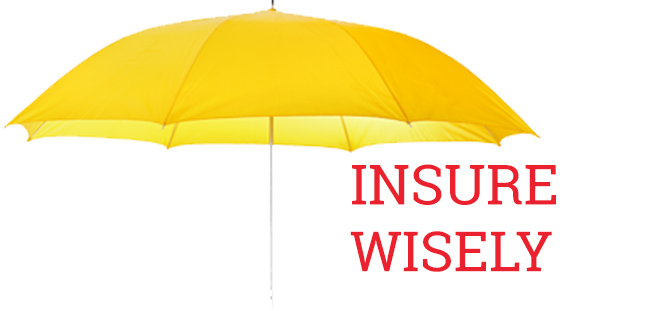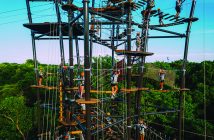Insurance. It is a critical part of your adventure business. Your clients likely come to visit you for the thrill associated with aerial risks, most of them more perceived than real. Unfortunately, there are some actual risks involved, too. How can you manage that risk and your exposure to it?
Here are several key trends and concepts insurance representatives say you need to know.
What are the critical components of an insurance policy?
There are four main components to any insurance program. They are:
1. The insuring agreement, the part of your policy that gives you coverage.
2. Exclusions, which specify areas where you are not covered.
3. Conditions, which describe the obligations of the insuring company and the policy holder to each other. One example of a condition could be that the insured must report an incident to the insurer when it occurs.
4. Definitions, the sometimes-sneaky section that can either grant or deny coverage based on how a particular word or phrase is defined. An example is “employee definition.” According to Bethany Haight of Assured Partners, “the definition might include/exclude volunteers, temporary employees, leased workers, or independent contractors. This can impact coverage for employee practices liability or employee theft, for example.” In other words, if a temporary employee is not defined as an employee, they may not be covered.
“Whatever you do, don’t assume anything in your policy,” says John Archer of Assured Partners. “When in doubt, call your broker! Surprises in our business aren’t generally a good thing.”
What insurance is needed during different stages of development?
There are two main time periods in the development of an adventure business in the eyes of the insurer: “pre-opening” construction and “in operation.” Both of these stages require different coverage. And when is the best time to talk to an agent as you’re planning to start your adventure business? “As soon as you have the concept of the business,” says Cameron Annas with Granite Insurance.
During the pre-opening phase, there are a couple of critical coverages. The first is a “general liability premises only” policy that covers the land and anyone on it. This coverage should be obtained as soon as you buy the property or sign the lease agreement. In fact, it’s a good idea to have your broker look over any lease agreements, to see what coverage the landlord may require you to have.
“On occasion, they ask for coverage that is beyond what is normal or reasonable,” says Archer. A licensed broker can help to make these determinations.
The other main coverage is called “builders risk,” and it covers the property during the construction of your course and facility. Unlike the coverage that is meant to cover the builders themselves, this coverage is paid for by you, not the builder.
Once you are operational, and perhaps even during the hiring process, you’ll need a different collection of coverages. Here are a few that are must-haves, in my opinion, for businesses in our industry:
1. General Liability (GL) Policy. This is the main policy, but know that each GL policy is different, and it is critical that you have one tailored to your business.
2. Employment Practices Coverage. This covers you for discrimination claims, sexual harassment, and wrongful termination claims. I know, I shudder just thinking about it, but it’s important in this day and age.
3. Cyber Liability. In our digital world, we are all at risk for data breaches. Estimates are that each breached record could cost you $100 to comply with government regulations for resolving data breaches. If you lose 2,500 client records, that’s $250,000.
4. Crime Coverage. This covers crimes by your employees, such as theft and check forgery. Annas says the average loss in this category is $300,000 before it is discovered. This is another cringe-worthy notion, but it can’t be ignored.
5. Abuse and Molestation. It’s terrible to even think about it. However, in an industry that deals with children, and putting harnesses on and off of clients daily, this is important protection. This is also coverage that is not typically included in your GL policy.
6. Business Interruption. As a predominantly outdoor industry, we are at the mercy of the elements. Storms may take out part of your course, or you may experience fires, floods, avalanches, locusts, or worse. This coverage pays in the event that you are not able to run your business. Of course, check your exclusions and definitions!
What is commonly overlooked in insurance?
New additions. If you add attractions, change operating procedures, and under-project your revenue, you may lack adequate coverage. Even changes in payroll can impact your insurance requirements. “Make sure that you are covered for the extent of your exposure,” says Haight.
Budgeting. We often see clients forget to include insurance as a line item in budgeting and projections. This line item can absorb between 5 and 8 percent of your operating budget—it is one of your larger expense categories. As your business grows, the amount and extent of your coverage will increase as well. Budget for it.
Yourself. It may also be wise to purchase “key man” coverage for yourself and anyone else high up in the leadership of your company. Think of it as a life insurance policy for the owners of the business.
Drones. Are you using drones to provide video for marketing? Make sure you tell your broker! Typically, drones and accidents caused by them are not covered by your GL policy, and could leave you exposed to a significant claim.
“Your insurance provider is more than just another vendor to your business,” says Annas, “They are a partner.” Keep them well informed.
Are there any claims trends of note in the industry?
Cruelest month. September typically has the highest number of claims. “As the season comes to an end, complacency tends to settle in, and staff just aren’t as alert as they were during the summer,” says Annas. In addition, college-age staffers have gone back to school and are often replaced by new staff who don’t receive the same level of training as employees brought on at the beginning of the season.
Highest claim amounts. Vehicular incidents claim the largest chuck of dollars awarded. Vans, ATVs, and golf carts are commonly pushed beyond their limits and roll over, for example. What makes these claims so large is that when an accident happens, it tends to involve multiple people.
Safer courses. The good news is that we are seeing fewer claims on the courses themselves. Collisions in particular are decreasing, which means that as an industry we are getting better in that aspect of the operation.
How often should a policy holder review the policy
with a broker?
Annual checkups. Policies should be reviewed at least annually. Talk to your broker four months before your policy is set to renew and discuss how your business has changed, what growth you are seeing, and what your plans are. This will help to keep you covered in all areas and limit your exposure for a claim. Don’t let your insurance coverage ride on autopilot!
Other insurance insights?
Rates are stabilizing. Insurance rates have pretty much stabilized for adventure park operators over the last couple of years. On the other hand, builders, you’re still on the rollercoaster.
Be cautious regarding first-year visitation estimates in a new park. Many new parks that opened over the last two years in the U.S. overestimated the number of visitors they would draw in year one. That can cost you money on insurance. It takes more than just building a park for people to flock to your door. Location, demographics, and aggressive marketing play major roles in getting people to your park.
Protection only goes so far. Insurance help put your business back together after a claim, but it can’t repair your reputation. A high-profile incident can still put you out of business, as well as raise insurance rates across the industry and hurt its reputation as a whole.
So, what does this mean to me?
1. When in doubt, call your broker. Remember, you’re not in this alone. A good broker will help make heads and tails of the legal jargon.
2. Review your policy, especially if it’s been a while since you’ve done so. If you’re past the one-year mark, call your broker today (see point #1), and do a line-by-line review so you know what you’re covered for and can also see what’s missing.
3. Spill the beans. Don’t try to hide anything from your broker. She’s there to help. If something is missing, you’ll likely find out about it one way or another, and it’s better to get covered before an incident happens. A good broker will match you with the policy that you need, rather than trying to sell you the kitchen sink.
A final thought. It’s better to be covered for something that never happens than to not be covered for something that does happen. So roll up your sleeves, pour yourself a cup of coffee (or glass of wine), and give your broker a call. Your future business will thank you for it.






